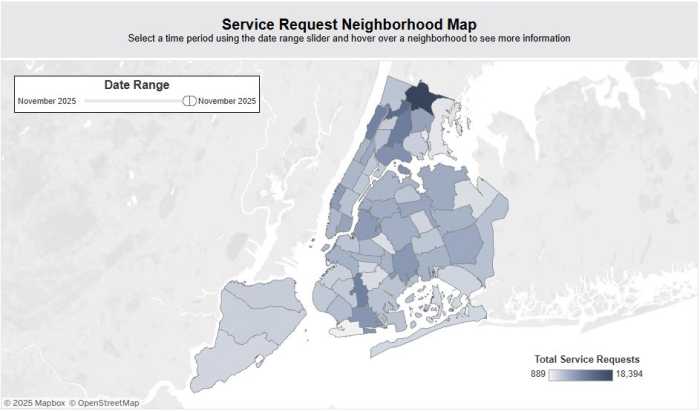The number of families keeping their children home this fall continues to grow as parents remain skeptical of the city’s ability to safely reopening schools for in-person learning this year.
On Tuesday, the Department of Education reported that as of Friday, Sept. 4, 389,666 public school students — 23,113 more than the week prior — requested to opt out of the city’s blended learning model where students learn in classrooms and from home.
Parents, teachers and principals have worried about the logistical and health challenges that come with reopening school buildings during the ongoing coronavirus pandemic for months and concerns are mounting as the city inches closer to the start on classes on Sept 21. A more recent cause for concern during the school reopening saga is ventilation as more research supports the idea that COVID-19 is more easily transmitted via stagnant air.
On Monday, the Department of Education announced that 10 buildings housing 21 schools would be closed to teachers and staff attempting to return on Tuesday, Sept. 8, due to ventilation issues. On Tuesday, Mayor de Blasio boasted that 96 percent of the 64,550 classrooms across 1, 485 school buildings for airflow quality “passed” a series of citywide school ventilation system inspections. The remaining 4 percent, or 2,800, only had “minor” issues that officials claimed could be fixed by the beginning of the school year on Sept. 21.
But it is unclear exactly what the city used as criteria to determine if a classroom had enough airflow to allow for students and teachers to safely return causing alarm in some parents and staffers. For some, the lack of transparency on health safety measures is enough to not allow children to return to schools.
“Our children and school staff cannot return to the city’s petri dishes and cesspool school facility conditions that took so many New Yorkers lives, last spring,” said Daniel Alicea, father, Far Rockaway teacher and member of the Teachers of NYC cohort. According to the DOE, 78 department employees have died after contracting the COVID-19.
But for others it more complicated. According to Deborah Alexander, a Community Education Council 30 co-president, many parents still have not made up their minds on whether or not to chose blended learning since parents are constantly “awaiting guidance” on what blended learning classes look like in terms of staffing, teacher contact hours and content.
Alexander doesn’t know if it’s better to register her elementary-school-aged daughter for blended learning, where she will be taught by potentially more than one unfamiliar teacher for most of her classes, or for fully remote courses where at least she will get the same teacher every day for two hours a day.
“On the safety front parents have made up their minds,” said Alexander who has two children in middle and elementary school. “But there is so much more, the educational aspect has largely been ignored.”
The number of students in fully remote classes is expected to change given that students can opt out of blended learning at any time during the school year but can only opt into blended learning a handful of times throughout the year. Because of this, Alexander argues, parents’ true feelings on blended learning will only actually be revealed on the first day of classes.
“We know that nothing can replace in-person instruction and the many supports, including social-emotional and health benefits, that students get in the classroom,” said DOE spokesperson Katie O’Hanlon. “Using the most current data from this survey, approximately 61 percent of students are set to return to school buildings in September.”
Out of those students opting for remote-only learning, 26 percent identify as Asian, 21 percent as Black, 38 percent as Hispanic, 11 percent as white, 3 percent as other and 1 percent did not choose to share information on race or ethnicity, according to the department.
The Department of Education also provided an updated breakdown of students requesting fully remote learning who potentially live in poverty by school district.
| District | % Remote Learning Requested | Economic Need Index |
| 01 | 36% | 67% |
| 02 | 33% | 53% |
| 03 | 26% | 49% |
| 04 | 32% | 83% |
| 05 | 26% | 83% |
| 06 | 27% | 83% |
| 07 | 24% | 92% |
| 08 | 31% | 83% |
| 09 | 25% | 93% |
| 10 | 29% | 84% |
| 11 | 28% | 79% |
| 12 | 24% | 93% |
| 13 | 34% | 61% |
| 14 | 31% | 75% |
| 15 | 29% | 57% |
| 16 | 26% | 83% |
| 17 | 28% | 77% |
| 18 | 27% | 74% |
| 19 | 29% | 87% |
| 20 | 40% | 77% |
| 21 | 32% | 74% |
| 22 | 32% | 65% |
| 23 | 26% | 88% |
| 24 | 28% | 73% |
| 25 | 39% | 64% |
| 26 | 40% | 49% |
| 27 | 33% | 69% |
| 28 | 34% | 62% |
| 29 | 32% | 64% |
| 30 | 28% | 68% |
| 31 | 25% | 53% |
| 32 | 24% | 87% |
| 75 | 30% | 89% |
| 79 | 2% | 86% |
This story originally appeared on amny.com.





































